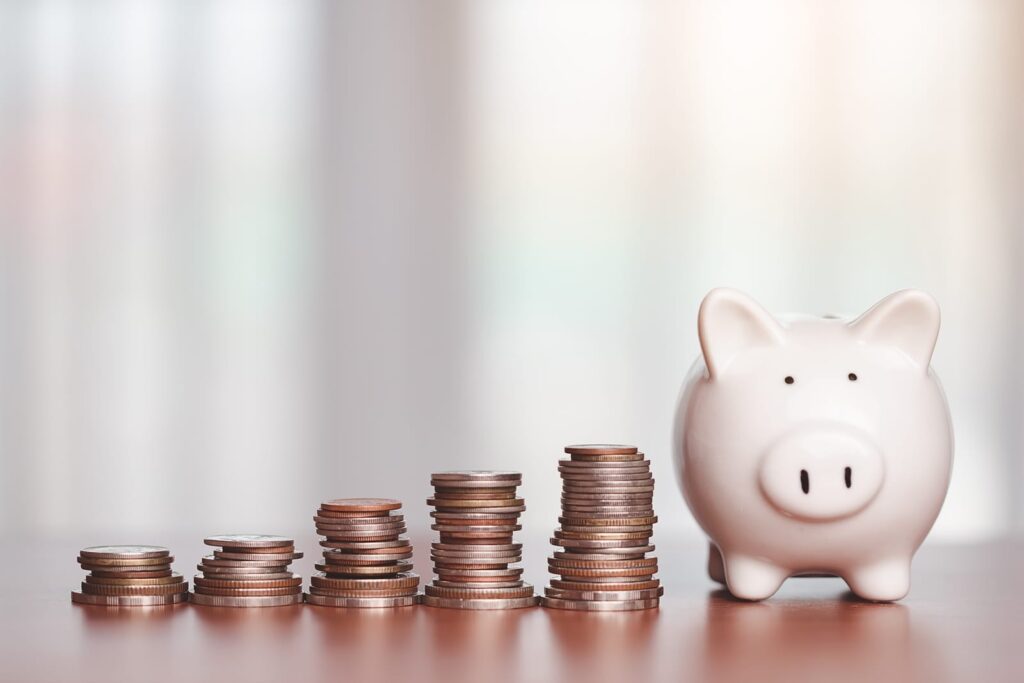We often think to save money it has to be a big lifestyle change, complete with spreadsheets, sacrifice, and hours of number crunching. But in reality, small and simple changes can make a big impact over time. The key is consistency and starting somewhere.
In this article, you’ll find practical tips that are easy to implement in everyday life. No complicated systems, no extreme frugality, just smart habits that help you keep more of your money without feeling deprived.
Start with just one or two tips this week, and build momentum from there.
Plan Your Meals & Shop With a List
Food is one of the biggest variable expenses in most rental and owned households. The good news? It’s also one of the easiest areas to cut back on, without sacrificing quality or flavour.
Meal planning helps you avoid last-minute takeout, cut down on waste, and stick to what you actually need. Before you shop, write a simple weekly meal plan, check what’s already in your pantry, and make a list. Then, this part is key — stick to it.
Bonus tip: Never shop hungry. That’s when impulse buys sneak into your cart.
Cancel Unused Subscriptions
It’s easy to lose track of how many subscriptions we’ve signed up for: streaming services, apps, magazines, gym memberships. But those small monthly charges can quietly drain your bank account.
Take 15 minutes to audit your subscriptions. Look at your bank or credit card statements and identify anything you’re not actively using. Cancel or pause what you don’t need, and revisit this check every couple of months.
If you’re unsure about a subscription, try downgrading to a free or cheaper plan instead of cutting it altogether.
Use Cashback and Discount Apps
Why pay full price when technology can help you save money?
Apps like ShopBack, Kiwiwallet, or Doshback automatically apply coupon codes or cashback offers at checkout. Some browser extensions will even alert you when you’re about to miss a deal.
You can also use grocery-specific apps that offer cash back on everyday items—just scan your receipt and spend less.
Over time, these small savings add up, especially for purchases you were planning to make anyway.

Buy Generic Brands
Branded products aren’t always better.
In fact, many generic or store-brand items, especially for pantry staples, cleaning supplies, and over-the-counter medicine are made in the same facilities as their more expensive counterparts.
Try switching just a few items on your next grocery run. If you can’t taste or feel the difference, keep buying the cheaper version. It’s one of the easiest ways to save money without compromising on quality.
Set Up Automatic Transfers to Savings
One of the most effective ways to set aside money is to treat your savings like a recurring bill.
Set up an automatic transfer from your checking account to your savings account every payday, even if it’s just $20. Automating this process removes the temptation to spend the money, and you’ll be surprised how quickly your money can grow with zero extra effort.
To make it even easier, use a high-interest account or budgeting app that helps you “round up” purchases or create savings buckets for specific goals.
Lower Your Utility Bills
Cutting down costs at home doesn’t have to mean living in the dark or freezing through winter.
There are plenty of low-effort ways to cut utility costs:
- Turn off lights and electronics when not in use.
- Unplug chargers and devices that drain power passively.
- Switch to LED bulbs.
- Lower your thermostat by just 1–2 degrees in winter.
- Use fans instead of air conditioning when possible.
You can also compare energy providers once a year to make sure you’re getting the best deal in your area.
Use Public Transport or Carpool
Fuel, parking, maintenance, and insurance—it all adds up when you drive daily.
If it’s feasible, consider taking public transportation a few times a week or organizing a carpool with coworkers. Even biking or walking short distances can make a noticeable difference in your monthly spending (and your health).
You don’t have to give up your car entirely to save money, just drive it less.
Stick to a 48-Hour Rule for Major Purchases
Impulse buying is one of the biggest enemies of a healthy budget. A simple way to counter it? Use the 48-hour rule.
Whenever you’re tempted to buy something non-essential like a new gadget, pair of shoes, or piece of home décor, wait 48 hours before making the purchase. This cooling-off period gives you time to decide if it’s really worth it or just an emotional decision.
More often than not, you’ll realize you don’t actually need the item. And if you still want it after two days, at least you’ll be sure it’s a thoughtful purchase.
Shop Seasonal Sales & Clearance
Timing is everything when it comes to shopping.
Instead of buying on impulse, plan your purchases around major sales events like end-of-season clearances, Black Friday, back-to-school promotions, or New Year deals. Retailers usually follow predictable discount cycles, so it pays to wait.
Also, don’t be afraid of clearance racks or outlet stores. You can often find the same quality items for a fraction of the price.
Pro tip: Unsubscribe from marketing emails so you’re not tempted to buy things just because they’re “on sale.”
Use a Budgeting App
Knowledge is power, especially when it comes to your money.
Budgeting apps like Beem, Buddy, or Frollo can give you a clear overview of your spending habits and help you track your savings goals. They sync with your accounts, categorise transactions, and even send alerts when you go over budget.
Even if you’re not a numbers person, seeing where your money goes each month can be eye-opening and motivating.
Final Thoughts
Reducing expenses doesn’t have to mean making huge sacrifices or depriving yourself. These simple tips can help you start building better financial habits with just a few small changes.
Pick one or two that resonate with you and try them out this week. Maybe you’ll start with meal planning, cancelling an unused subscription, or setting up a small auto-transfer to your savings.
Whatever you choose, the important part is starting. Small steps lead to big budgeting over time.




